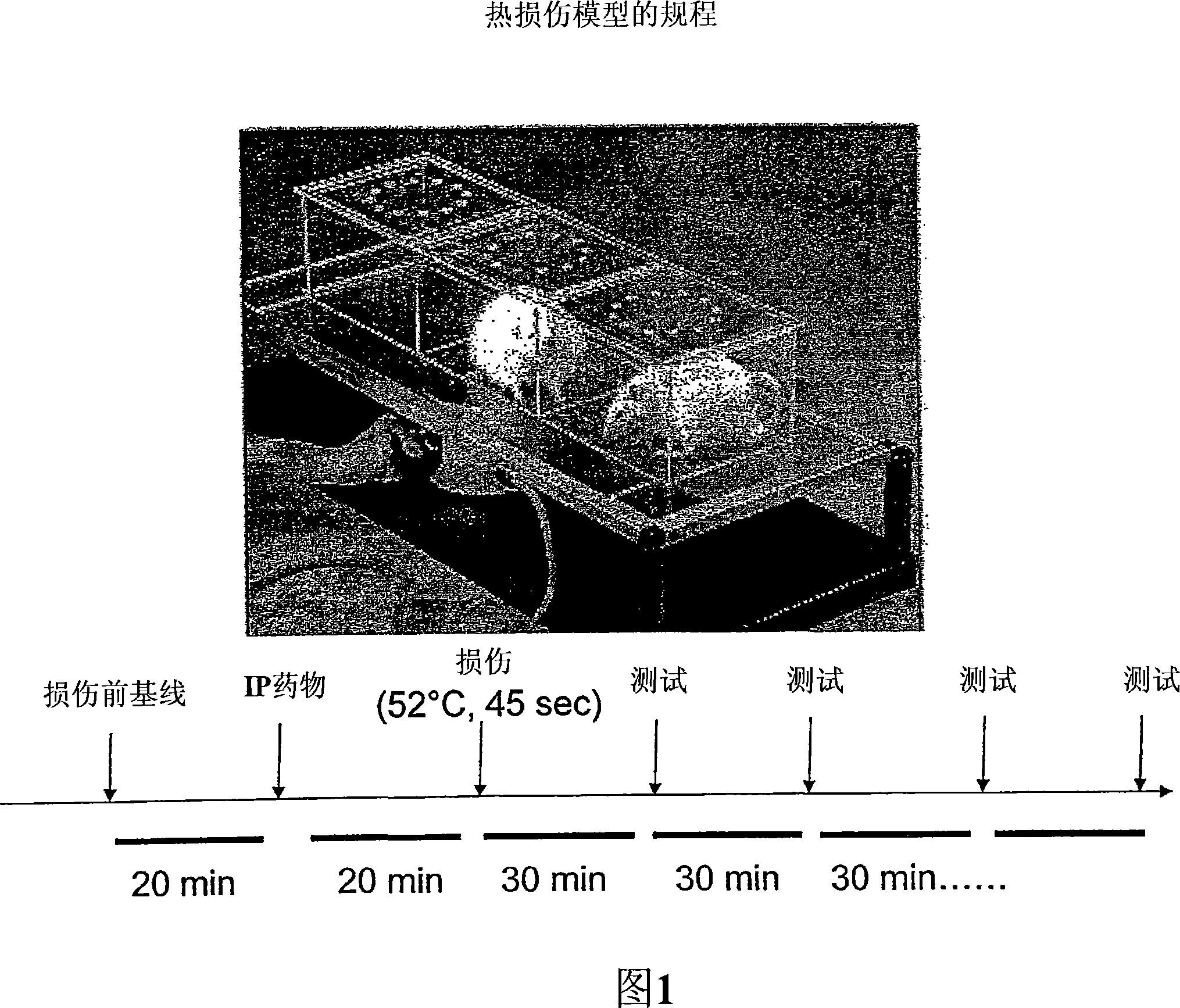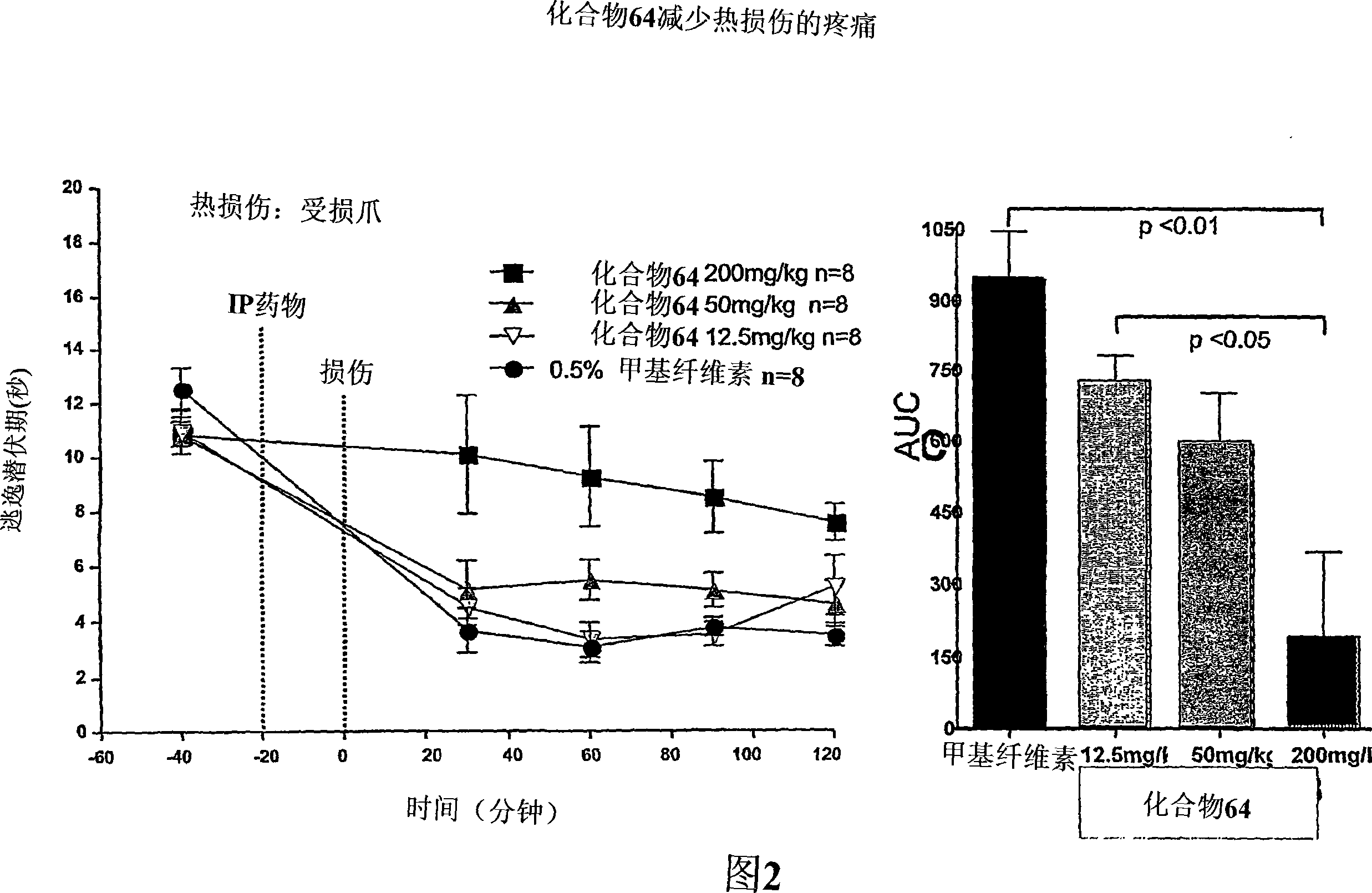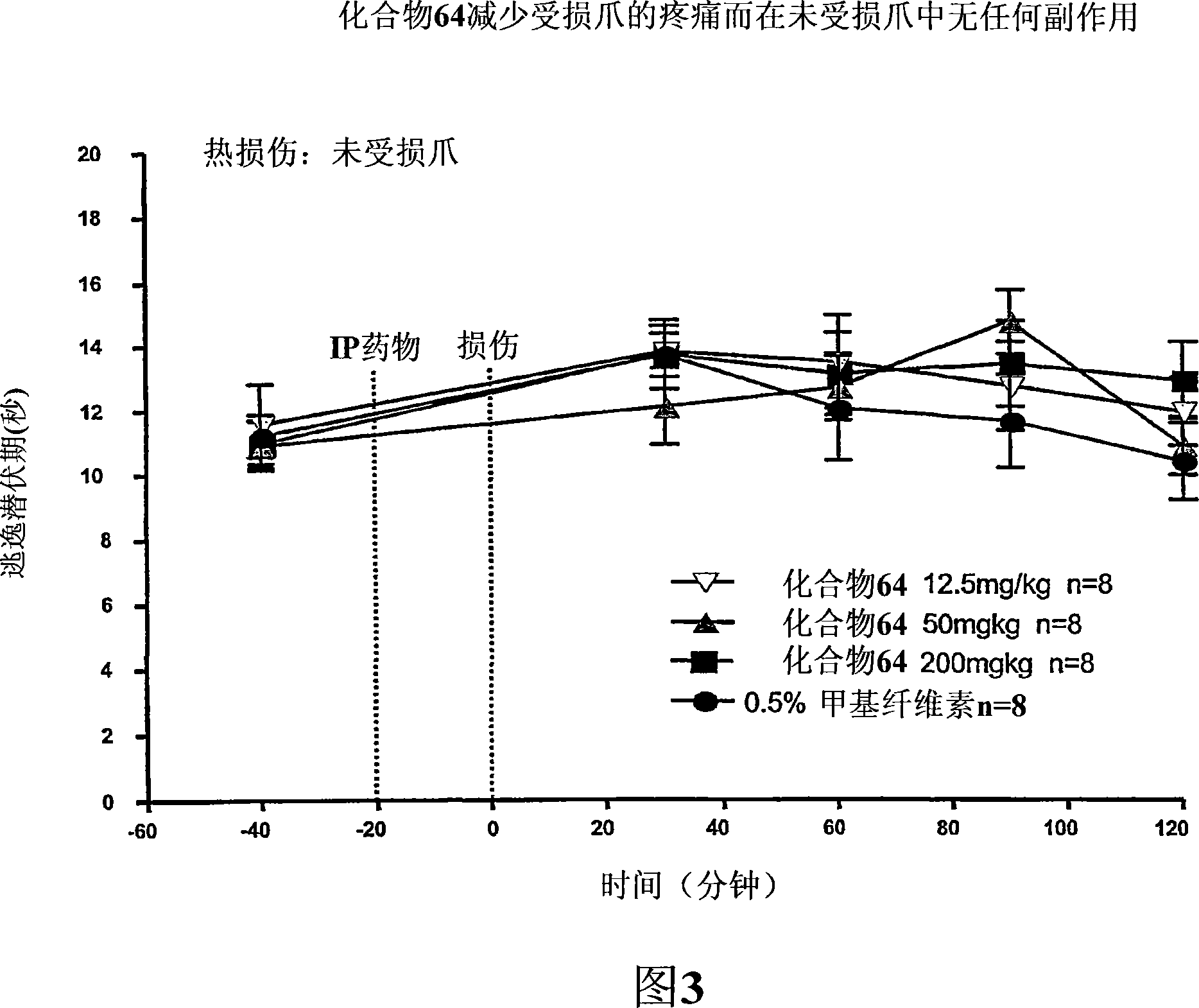Compounds for modulating TRPV3 function
A compound and functional technology, applied in the field of RPV, antagonizing TRPV3 function, calcium permeation non-selective cation channel, inward current field, can solve problems such as increased intracellular calcium level or concentration
- Summary
- Abstract
- Description
- Claims
- Application Information
AI Technical Summary
Problems solved by technology
Method used
Image
Examples
Embodiment 1
[0647] Embodiment 1. Synthesis of compounds of the present invention
[0648] Synthesis of 2-chloro-1-(8-methyl-3,4-dihydro-2H-quinolin-1-yl)ethanone (2):
[0649]
[0650] 2-Chloro-1-(8-methyl-3,4-dihydro-2H-quinolin-1-yl)ethanone (2): to 8-methyl-1,2,3,4-tetrahydro Anhydrous CH of quinoline (1) (2.77 g, 18.8 mmol) 2 Cl 2 (50mL), chloroacetyl chloride (1.80mL, 22.6mmol) was added at 0°C, followed by dropwise addition of Et 3 N (6.30 mL, 45.2 mmol). will react at N 2 Stir overnight. Then the reaction mixture was washed with CH 2 Cl 2 (50 mL), washed with water (2 x 15 mL), and saturated NaCl (15 mL). via MgSO 4 Drying, filtration, and concentration gave compound 2 (3.7 g). This crude material was used in subsequent reactions without further purification.
[0651] Synthesis of 2-chloro-1-(3,4-dihydro-2H-quinolin-1-yl)ethanone (4):
[0652]
[0653] 2-Chloro-1-(3,4-dihydro-2H-quinolin-1-yl)ethanone (4): to 1,2,3,4-tetrahydroquinoline (3, 2.00g, 15.0mmol ) of...
Embodiment 2
[0808] Example 2. High throughput screening analysis
[0809] This assay relies on the detection of intracellular calcium concentrations ([Ca 2+ ] i ) rises after channel activation. Ca 2+ Rising utilization is loaded into cells and subsequently directed to the [Ca 2+ ] i Fluorescent Ca 2+ indicator for quantification. Ca 2+ Influx follows activation of TRPV3 channels. Inhibit the [Ca 2+ ] i Rising compounds were viewed as targets for further research.
[0810] A commercially available HEK293 / TREx line (Invitrogen) was stably transfected with the TRPV3 construct and screened by immunostaining for clones with TRPV3 expression after stimulation with 1 μg / ml tetracycline. Clonal TRPV3-expressing cells were maintained in growth medium recommended by the manufacturer supplemented with 100 μg / ml hygromycin to facilitate maintenance of the TRPV3 construct. After growing to near-confluent sheets, cells were plated in 384-well plates at a density of ~25,000 cells / well in ...
Embodiment 3
[0811] Embodiment 3. Diaphragm clamp experiment
[0812] Whole-cell patch-clamp experiments allow detection of currents through TRPV3 channels in the above cell lines. A glass electrode is brought into contact with a single cell, and the cell membrane is then disrupted, allowing the voltage across the cell membrane to be controlled and the current flowing through the membrane to be measured using an amplifier connected to the electrode. The perfusion system allows control of the extracellular solution, including the addition of current blockers and activators. The current can be activated by heating the solution to 28°C or hotter, or by adding 20 μM 2-APB to the solution.
[0813] TRPV3 cells were induced for 20-48 hours, removed from growth plates, and replated on coverslips at low density (to obtain good physical separation of single cells) for measurements. In some instances, cells were grown overnight on coverslips at low density. Patch-clamp recordings were performed...
PUM
 Login to View More
Login to View More Abstract
Description
Claims
Application Information
 Login to View More
Login to View More - R&D
- Intellectual Property
- Life Sciences
- Materials
- Tech Scout
- Unparalleled Data Quality
- Higher Quality Content
- 60% Fewer Hallucinations
Browse by: Latest US Patents, China's latest patents, Technical Efficacy Thesaurus, Application Domain, Technology Topic, Popular Technical Reports.
© 2025 PatSnap. All rights reserved.Legal|Privacy policy|Modern Slavery Act Transparency Statement|Sitemap|About US| Contact US: help@patsnap.com



